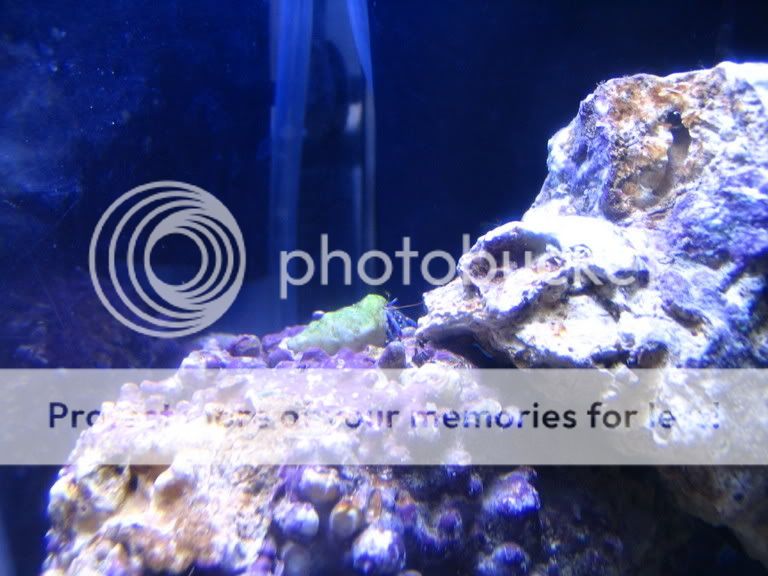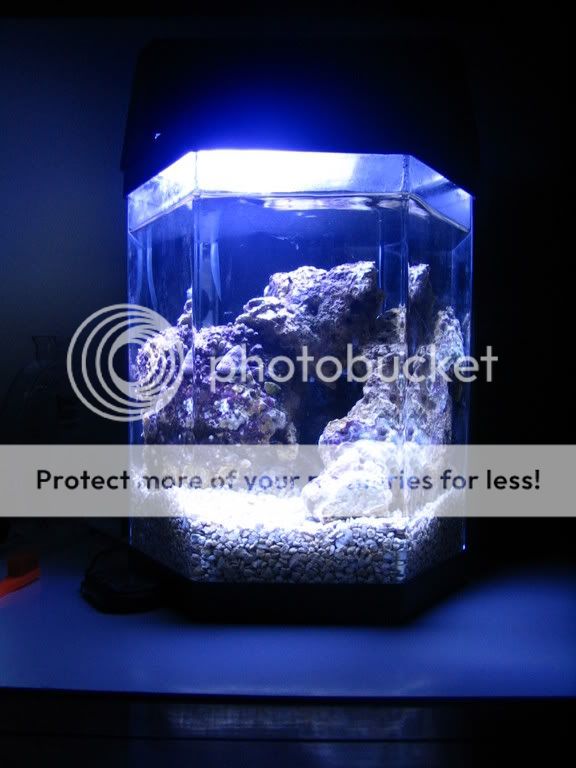help offer
help offer
Hi there. I wanted to chime in on this thread-the start of this pico looks great and I wanted to call a few rounds that I know will help you keep it long term in terms of waste handling stability.
Anything that has surface area that is not cleaned regularly and flushed of debris and detritus will be a nitrate factory upon further breakdown of said material, this is a firm rule because the waste accumulations aren't completely broken down even though most think they are. If they were, you wouldn't see visible material and it wouldn't have colors in it (this is a very general assessment of protein basis, but accurate for the topic of aquarium waste). This includes power filters, live rock, and especially especially the substrate of the system. The wastes associated with aquarium fauna tend to be brown/green/black, and they are definately aggregates of incompletely digested proteins to a decent extent-even when substrate microfauna processes some of this waste, their respective wastes have small bits of protein!! The point of this extraction is keep it out of the system, ammonia is again liberated as bacteria work on reduced waste particles, and the oxidation of this ammonia again lends nitrate to the system as breakdown continues (nitrate factory). Less impactful in a nano-large system, but very impactful in the pico reef. I've logged thousands of hours keeping and building pico reefs, many of the pics are on here, and I can't tell you how rare it is to keep a gallon or sub-gallon system running for one year or more. That should be your goal unless you plan on transferring animals to a larger and more stable system. Almost any pico reef that has basic temp and salinity control will run for 1-3 months, but the reason they crash after that is 99% narrowed down to two factors that aren't as impactful in larger setups-dosing habits and waste control habits.
Water changes aren't sufficient alone in the pico reef. Water flushes are required for long term use, no other way around it if you are packing rock and coral in your tank. Again, water changes that don't disturb detritus stores are the commonality, and so is limited lifespan. The correct way to handle pico reef maintenance is to change water often, flush at least once a month or more if needed. Major tenet: You know you aren't flushing enough if you can dump clean water in your pico and it stirs up a brown cloud. In your case, you aren't using fine sand so anything that gets stirred up will be made of proteins and will certainly generate NO3 if left in there for a week or so.
Flushing:
Pick up your pico, set it in the kitchen sink, pour five gallons of clean SW in it and let it all overflow into your sink. This will carry out the brown stuff

ps, I have the unregistered patent on this pico technique and it works wonders but you must do it often.
Simply stated, large system dilute these stored wastes better than picos, and detritus aggregation will crash your tank within 8 months unless you plan around it. Such measures aren't needed if you stock it and feed it certain ways, but for the way most people use a pico reef this, and the dosing (keep it consistent and simple) approach are the keys to long life. By that, I mean a quality and not algae-laden/verge-of-crashing life.

You don't need to add anything to this pico until it's packed with coral and animals, then at that point waste acids (as it ages) will attack your pH moreso than in a large nano, so you better be dosing alk control. And, to keep that balanced with Ca++, you need to be dosing calcium. THe only way to do this in relative balance, without hardcore testing in the pico reef, is to add a small amount of one of the two part dosers at least 3x per week, once again relative to your stony coral loads and waste handling habits. People who don't dose a pico reef, and keep it alive for more than a year, are doing so many water changes they are both replenishing the elements and handling the waste removal secondarily. If you want more moderate water changes, you gotta dose.
Last but not least, I love your system's beginnings and your retrofits, but if you want a much simpler approach remove that CC sandbed, it's the largest detritus trap you can have for that size tank. If you must keep it, clean your system regularly (as it ages) by taking all your rocks out, and the CC, and rinsing them clean in SW until it does not cloud anymore.
I wouldn't trust me for a darn thing in this life other than to tell you what your pico reef will look like in a year

addressing these concerns now will ensure you the best chance for sure.
B



